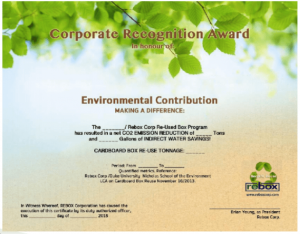Keeping employees engaged is a tricky task as an employer. Every workplace is a bit different, as are an employee’s daily tasks, so finding ways to increase engagement can vary across companies and sectors.
In the manufacturing world, however, there are a few tried-and-true ways to improve the overall engagement levels of workers. Immersed in the world of manufacturing, Rebox wants to share some of those strategies with employers and the folks that make up their workforce.
It’s also incredibly important to remember that employees are people. And catering to the needs of the people is one of Rebox’s core values. From our manufacturing partners, to retailers, to the employees on a factory floor, everyone associated with Rebox is considered a partner.
We truly value people and it’s important that they’re engaged in their work, for everyone’s mutual success. So to ensure your employees are doing the best they can, we’ve assembled a short list of five effective engagement-improving strategies tailored to the manufacturing sector, and some that simply speak to how human beings operate in the work-world.
Read on and untap the potential of your employees.
1. Value Your Employees, And Make Sure They Know You Do
Every good employer knows to value hard-working, quality employees. The real trick is communicating to an employee that they are a valued part of the team.
Making an employee feel appreciated doesn’t have to be a one-off event and it shouldn’t always be directly tied to performance. Instead, a sense of value should be established over time, and the best way to do that is to open up a line of communication.
Ask your employees about their thoughts on a project. Be open to their feedback or constructive criticisms. Actively listen when they come to you with a problem. Ultimately, establish a rapport where they feel like they are respected and integral to the company’s success.
2. Create (And Encourage) A Team Atmosphere
Camaraderie is never really born between a group of people, it’s made over shared experiences. A team needs time to foster positive bonds between its members.
If you want employee-bonds to become stronger, and the relationships between them to be a bit more well-rounded, then you need to create a space to do just that. Organize monthly hangouts outside of the workplace that are tied to an activity.
Whatever the best route for you, just remember to create a team atmosphere consistently over time.
3. Let Employees Do What They Do Best
A tedious task is just that, tedious. Unfortunately, for many employees in the manufacturing sector, monotonous duties are part of their daily workflow. Disinterest in the day’s work and a general lack of any real enthusiasm tend to be the direct byproducts, even if a dull job only takes up a small chunk of an employee’s day.
Tedious tasks can be inescapable, depending on the workplace. But if an employer steps in and eliminates the need for a disengaging workplace duty, employees can focus on tasks that add value to their workday.
Eliminating the need for a box bailer is a prime example.
Repeatedly crushing cardboard boxes with the press of a button gets old, fast. That’s why bailers are notorious for being the ultimate tedious task on a work floor.
But bailers are not a necessity. Rebox instantly eliminates the need for box bailers, since Rebox picks up all used corrugated cardboard box materials directly from manufacturers. And without a bailer on the work floor, employees instantly have more time to perform far more important and valuable tasks.
It’s really all about streamlining the workplace so employees can do what they do best.
4. Challenge Your Employees to Grow
A stagnate work environment is detrimental to success. Without clear opportunities for advancement, employees will simply maintain the status quo.
On the surface, that’s not necessarily a bad thing. As long as an employee is doing their job satisfactorily there is no real issue. But in the long term you want your workers to be focused, vying for that promotion or new role. Not only will that increase a worker’s level of engagement but it can also lead to innovation, as employees try to find optimal routes to complete a given task.
Passing along major tasks or projects to an employee is another way of challenging them to improve. The same can be said of simply switching an employee’s role or moving them to a new department. A company’s growth starts at the employee level, so always think of ways to improve your team.
5. Celebrate The Successes
If your company is doing well, it’s because of your employees. That’s why employers need to celebrate the success of their company by giving back to employees.
The way Rebox increases operational efficiency is another good example. Through Rebox, manufacturers cut down on wasted time dealing with used corrugated cardboard boxes and actually earn money for the materials. That leads to increased revenues, which frees up a bit of funds for manufacturers to offer employee profit-sharing programs, micro-finance loans, or just have a festive gathering to celebrate the company’s success.
At Rebox, acknowledging the hard work of manufactures, retailers and employees with tangible benefits is an important part of what we do everyday.
